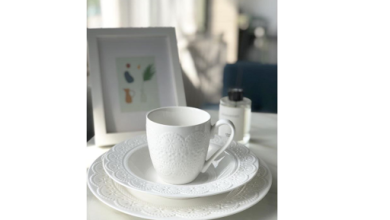Design Strategies That Work for Small Business Marketing Materials

Key Takeaways:
- Implementing practical design principles can propel the appeal and impact of marketing materials for small businesses.
- A consistent visual identity for a brand is critical to differentiation and customer recognition in a crowded marketplace.
- Small businesses can achieve high-quality marketing outputs while adhering to a budget using intelligent design strategies.
For small business owners, creating marketing materials presents a unique opportunity to showcase their brand’s personality and core values. From the texture of a print brochure to the website’s layout, design choices affect how customers perceive the business. Influential, well-designed marketing materials serve as a silent salesperson — echoing the brand’s message and image even when the owner isn’t present.
The Power of Visual First Impressions
Making a lasting visual first impression is akin to the firm handshake of an initial meeting; it sets the tone and invites further engagement. A consumer’s first interaction with a business could be through website imagery, a logo on a business card, or the color palette of a product package. These moments are compiled to shape the overall perception of a brand. The use of striking visuals, harmonious color combinations, and a distinctive style that aligns with the company’s ethos can cement your business’s place in the minds of consumers. Thus, putting meticulous thought into every visual aspect of marketing materials is non-negotiable for any business intent on leaving a resonant first impression. For those seeking inspiration, deals on design services, or just starting this journey, a resourceful starting place is https://www.retailmenot.com/view/vistaprint.com. Not only does it offer various options, but it can also provide access to attractive discounts for cost-conscious businesses looking to make a strong visual statement without overspending.
Color Psychology in Marketing: More Than Just Aesthetic Choices
Color choices in marketing are strategic decisions deeply rooted in the psychology of the human mind. Red can evoke urgency or excitement, blue can impart trust and security, and yellow can cheer and invigorate. Each color holds the power to influence consumer emotions and actions, making it imperative for marketing materials to use the correct palette. When done right, the chosen colors convey the desired message, reinforce the brand identity, and encourage customer loyalty. These choices are particularly crucial for small businesses, as consistent use of color helps establish brand recognition among existing and potential customers.
The Role of Typography in Conveying Your Brand Message
Regarding typography, letters’ style, size, and arrangement can significantly impact how a message is perceived. But the impact of typography extends beyond readability — it’s a powerful conduit of brand personality. The boldness of a heavy sans-serif, the elegance of a scripted font, or the modernity of a clean line typeface can all speak volumes without saying a word. Mastering typography involves understanding font types’ nuances and potential impact on audience perception and message transmission. When chosen adroitly, fonts relay the textual message and add to the overall brand experience, making the typography choice an integral part of the design process.
Integration of Images and Graphics: Telling a Brand’s Story
When designing marketing materials, the saying a picture is worth a thousand words holds. Visuals like images and graphics serve as rapid transmitters of complex messages, telling a brand’s story, showing product benefits, or demonstrating service effectiveness without cluttering space with text. When smartly aligned with the branding strategy, these visuals can stir emotions, forge connections, and drive consumer actions. High-quality, relevant imagery becomes the hook for the viewer’s attention, while infographics might distill data into an engaging, easily digestible format. Smaller businesses can often look like their larger counterparts through savvy use of images and graphics, leveraging this visual shorthand to communicate effectively in today’s fast-paced consumer environment.
Practical Design Tips for Attention-Grabbing Business Cards
A business card does more than convey contact information — it provides a tangible sense of a company’s brand. An effectively designed business card can reflect the owner’s attention to detail, professionalism, and creativity. For small businesses, where personal connections can significantly impact growth, the business card can become a memorable artifact of the initial interaction. Including a unique visual element or an unexpected texture can make the card stand out, ensuring it won’t get lost in the shuffle. Materials, finishes, and print quality all play roles in delivering a business card that shares necessary contact details and communicates the brand’s essence.
Brochures and Flyers: Designing for Information and Engagement
Brochures and flyers are the stalwarts of marketing collateral — versatile, informative, and direct. Designing these pieces to be both information carriers and engagement tools requires a blend of clarity, visual appeal, and strategic layout. The challenge for small businesses is to distill their message into an easy-to-digest format that still compels the reader to take the following steps. By combining well-constructed narratives with supportive visuals and a clear call-to-action, these print essentials can draw attention, educate prospects, and convert interest into sales. In a digital world, the tactile quality of brochures and flyers adds a sensory dimension to the brand experience, which can linger longer than the fleeting images on a screen.
Digital Vs. Print Marketing Materials: Understanding the Design Differences
Where print materials shine in tangibility and permanence, digital materials boast interactivity and reach. Even though the fundamental principles of good design apply across the board, the execution varies noticeably between these media. Digital designs often need to consider user experience, load times, and adaptability across devices, whereas print designs focus more on the physical quality and feel of the materials used. Recognizing and leveraging the strengths of each format enables businesses to deliver coherent and compelling brand messaging across different customer touchpoints.
Striking a Balance in Marketing Designs Between Budget and Quality
The perennial challenge for any small business is to find that sweet spot where cost-effectiveness meets the high quality of marketing materials. Investing in professionally designed materials might seem out of reach for some, but the evolution of design tools and resources has democratized access to high-quality design. With services like online design platforms, print-on-demand technology, and accessible design templates, producing materials that look premium without a premium price tag is possible. It’s also advantageous to consider the return on investment that well-designed materials could bring, reflected in increased customer engagement and sales conversions.
How Consistency in Design Strengthens Brand Identity
A consistent brand identity is expressed by unified language on all marketing materials, not simply one with the same logo or color scheme. It assures customers they interact with the same brand no matter where they see it—on a sign, online, or on product packaging. This repetition builds recognition, familiarity, trust, core customer loyalty, and brand equity components. Small businesses must not undervalue the importance of consistency in their designs, as it can significantly influence the brand’s perceived value and position within the market.
Measuring the Effectiveness of Your Marketing Designs
Businesses must continuously assess and analyze their marketing materials to comprehend their influence completely. This might entail tracking customer interactions, such as website visits after a campaign launch, or monitoring sales trends following the distribution of new brochures. Feedback can also come through direct customer surveys or social media engagement. Across any measures, the goal is to gather actionable insights to refine and improve the design approach, ensuring that each iteration of marketing materials performs better than the last in attracting and retaining customers.





